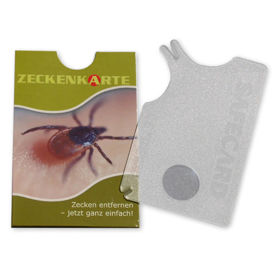Customer question:
What are the signs of borreliosis on the skin? Anonymous customer's question
Pharmacist's answer:
1. grade: rapidly growing rash
A rapidly growing rash may appear after a tick bite. Most people develop a rash within a few days or weeks of being bitten by a tick. If you develop a rash, it appears near (or at) the site of the tick bite. You may see a spot or bump on your skin; some people even notice the bull's-eye rash shown below.
If you develop a rash, you may notice that:
- has an outer edge that feels scaly or crusty
- is it smooth and warm to the touch
- causes a burning sensation
- itching or painful
2. stage: minor, oval rashes or reddish lump
Without treatment, Lyme infection can spread to other parts of the body. Stage 2 begins when the bacteria spread to other parts of the body. You may see minor, oval rashes on the skin at this stage. Some people develop a bluish-red bulla.

Once the infection has spread, minor rashes may appear anywhere on your skin except the palms of your hands and soles of your feet. Most rashes appear on the hands, feet, and face. Some people develop a bulla, which your doctor may call a Borrelia lymphocytoma. In children, this lump usually appears on the earlobe. Adults often notice a raised lump around the nipple.
The rash that appears during stage 2 differs from the one that may appear during stage 1. In stage 2, the rash remains the same size and does not increase.
A rash, induration, and stage 2 symptoms appear about 30 to 45 days after an infected tick bites you. However, these can also appear later, sometimes after six months or more.
Stage 3: Changing Skin
In stage 3, some signs of Lyme disease appear on the skin. Suppose you were in Europe when a tick bit you; you may notice changes in your skin. These changes usually appear on the arm or leg. Some people develop this change in both arms or legs. It can also appear on the knee, elbow, or elsewhere.
The skin begins to swell, and you may notice some redness. These signs are the result of a long-term bacterial infection. The affected skin may also be painful. Over time, the skin begins to harden and shrink, causing deep wrinkles to form. The medical name for this condition is chronic atrophic acrodermatitis. In stage 3, you can also see tumors on the skin. It is thought that long-term infection and swelling of the lymph nodes can lead to cancer, known as cutaneous B-cell lymphoma.
Interesting reading: Borreliosis consequences
Interesting reading: Borreliosis symptoms













